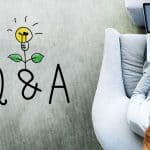PMXPO Project Management 2015 Virtual Global Congress – Recap
PMXPO Project Management 2015 Virtual Global Congress – Recap
One long, fruitful day. 6.5 PDU’s. New insight into the direction of PMI and the world of project management.
I attended Projectmanagement.com’s 2015 virtual Global Congress yesterday (April 30, 2015).
Admittedly skepticism led to event attendance. Would sitting in front of a monitor for ten hours listening to virtual/remote delivery of project management content be as viable as remote instruction?
Knowing that I could always disconnect either physically or mentally, it was worth the cost. FREE.
ProjectManagement.com was acquired by PMI during 2014 and has become the instructional branch of the organization. Although PMXPO2015 is the 8th virtual conference, it was the first under the auspices of PMI.
Unlike the two major PMI Global Congresses, you may still attend PMXPO2105 by watching all the content ‘PMXPO On Demand’ or through the PMXPO 2015 Engage Event host site. Did I already say FREE PDUs.
Unlike the PMI Global Congress, you only have one track – and the event coordinators (Stephen Maye and Erin DeCaprio) coordinated a nice line up. The format is decidedly NOT live, so a replay provides the same content and perhaps better playback control. You are watching a slide deck (sometimes with videos), while the presenter speaks over the content. Several presenters were clearly providing input over the phone – no live audience participation with this one.
The topics were decidedly Portfolio, Portfolio Management, Business Analysis and Agile based potentially foreshadowing content for the EMEA 2015 and North America 2015 Global Congresses. I took advantage of early bird registration for the North America Congress in Orlando, FL that runs from October 11-13. (Let me know if you will be there and we can meet over lunch?)
A virtual vendor exposition is also available, and several presenters were decidedly product promoters. I enjoyed the ability to review content and interact as desired.
Here is an overview of the primary presentation track:
- From Leading a High Performance Team to Landing on Mars
- Presented by Mark Steltzner, Lead Landing Engineer for NASA’s Curiosity Rover project.
- Why You Need to Consider Redefining the PMO
- Presented by Mark Price Perry, David Prior, and Andy Jordan
- Ten Ways to Market your Project
- Presented by Elizabeth Harrin, Otobos Consultants
- PPM Process Management and the Role of the PPM Process Owner
- Presented by Steve Romero, Romero Consulting
- PMI’s Annual Pulse of the Profession: An In-Depth Look at Requirements Management
- Presented by Tricia Cabrey, PMI Market Researcher
- Do or Die Agile Leadership Practices for Today’s eXtreme Projects
- Doug DeCarlo, The Doug DeCarlo Group
I found all of the tracks information, if somewhat stilted by the presentation medium. Mark Steltzner pulled off a very nice keynote through the use of graphics, videos, and actual images from the Curiosity Rover. Each presenter provided content for download (though only a few provided their slide decks). I am still picking through the wealth of downloadable materials. Every presenter yielded at least a few valuable tidbits, and the overall flow was well conceived.
Given that the conference was very Portfolio and Business Analysis focused, it is clear that PMI is focusing on two of the latest credential programs: the Portfolio Management Professional (PfMP)® and the PMI Professional in Business Analysis (PMI-PBA)®.
Some of my take-aways:
Projects, and project managers, tend to focus most on the Execution (including Initiation, Planning, Execution, Monitoring & Controlling, and Closing) of the product or service. As a result, it is easy to lose sight of the actual goal or needs expressed in the idea. Success leadership requires learning and focusing on the true need. A portfolio management approach attempts to track the entire timeline to benefit realization and measurement.
- Based on the 9 PMO model, the primary role of the PMO should never be about enforcing best practices or assuring training and certification for PM’s. Rather it should be about providing value as determined by the business. Potentially facilitating, coordinating, or guiding business change. The vision and initiative of the PMO must be defined and supported by senior management at the strategic level, and designed to adapt to the changing needs of the business.

Doing a little research on the 9 PMO model yielded the following diagram, which highlights variability in PMO purpose and focus. This is not necessarily a definitive model, though it yields some insight into the approach for developing the most appropriate PMO guidance.
- The development of PMO’s (read that Portfolio Management Office) is expanding due the advancement of Agile or Lean methodologies. Both Agile and Lean methodologies are more Adaptive, and therefore fewer planning or monitoring & controlling tools are used. Scope, time, and cost provide a different reference point since the goal should not be about the project life-cycle but about the product life-cycle. The PMO therefore provides oversight to assure that business objectives are being considered.
- The culture of an adaptive or Agile business mandates a mindset where mistakes and failure are encouraged. Note that is encouraged, not merely accepted. Far higher emphasis must be placed on both opportunistic and failure based alternatives or outcomes. Mistakes are the means to learning what does not work and getting the team closer to that which might work. Outcomes become most important and process is merely a tool or a path.
- In the new PMO, ‘Pet Projects’ cannot be tolerated. The culture, from the top down and across the organization, must foster a common, open vision and promote leaders that guide rather than manage or enforce. There is a major disconnect or problem if Pet Projects and politically influence scope creep are allowed to occur. Both the PMO and projects will fail in such cultures.
- The underlying focus of each speaker seemed to be Change Management and Leadership. Working with people to understand change processes, overcoming fears, and taking steps toward a desired outcome, even if the path and the process are initially unknown.
- Across a wealth of market research statistics, one clear set of outcomes identifies that Business Analysis and better requirements generation and review must be pulled into the initiation of a project. 50% of all projects fail due to poor requirements (understanding, documentation, etc.) $.51 of every $1.00 within a project budget is lost due to poor requirements.
- Great projects are about the proper mixture of People, Processes, and Culture. All three must be considered in the proper mix.
- Doug DeCarlo espoused the ‘Chaordic Zone’ based on the works of Dee W. Hock. The Chaordic Zone is somewhere between orderly and chaotic. Orderly is precise process and following the plan. Reality, however, rules over the plan every time. As such most projects end up within the realm of unbounded chaos since leadership is not prepared to work within a zone of organized chaos. Most people, including leaders are not comfortable within the Chaordic Zone. (Note I have often stated that the tools of project management are designed to Organize the Chaos of Change – the human nature of change cannot be altered.) Project Dynamics will defeat project mechanics every time. This returns us to the realm of People, Process and Culture where the group ‘who’ ultimately achieves the goal better than a static route.
- At least two speakers referenced Primal Leadership by Daniel Goleman. This work established the concept of emotional intelligence in the workplace and suggests the concept of motivational intelligence. The book is already on my reading stack at home. I guess it needs to drift nearer the top.
Clearly the topics we can expect at the Global Congress, and being added to the next edition of the Project Management Body of Knowledge will include expanded understanding of leadership, the motivations associated with change, and the skills and processes (tools) that we will need to develop as professional project managers.
I look forward to seeing you in the classroom, or online!
Steven Fullmer
Interface Technical Training Staff Instructor
Steve teaches PMP: Project Management Fundamentals and Professional Certification, Windows 7, Windows 8.1 and CompTIA classes in Phoenix, Arizona.
You May Also Like
9 PMO model, Agile, Business Analysis, Change Management, chaordic leadership, chaordic zone, Emotional Intelligence., leadership, lean methodology, motivational intelligence, PMBOK, PMI, PMO, PMP, PMPC, portfolio management, primal leadership, project culture, Project Management, project success, projectmanagement.com
A Simple Introduction to Cisco CML2
0 3896 0Mark Jacob, Cisco Instructor, presents an introduction to Cisco Modeling Labs 2.0 or CML2.0, an upgrade to Cisco’s VIRL Personal Edition. Mark demonstrates Terminal Emulator access to console, as well as console access from within the CML2.0 product. Hello, I’m Mark Jacob, a Cisco Instructor and Network Instructor at Interface Technical Training. I’ve been using … Continue reading A Simple Introduction to Cisco CML2
Creating Dynamic DNS in Network Environments
0 642 1This content is from our CompTIA Network + Video Certification Training Course. Start training today! In this video, CompTIA Network + instructor Rick Trader teaches how to create Dynamic DNS zones in Network Environments. Video Transcription: Now that we’ve installed DNS, we’ve created our DNS zones, the next step is now, how do we produce those … Continue reading Creating Dynamic DNS in Network Environments
Cable Testers and How to Use them in Network Environments
0 727 1This content is from our CompTIA Network + Video Certification Training Course. Start training today! In this video, CompTIA Network + instructor Rick Trader demonstrates how to use cable testers in network environments. Let’s look at some tools that we can use to test our different cables in our environment. Cable Testers Properly Wired Connectivity … Continue reading Cable Testers and How to Use them in Network Environments





